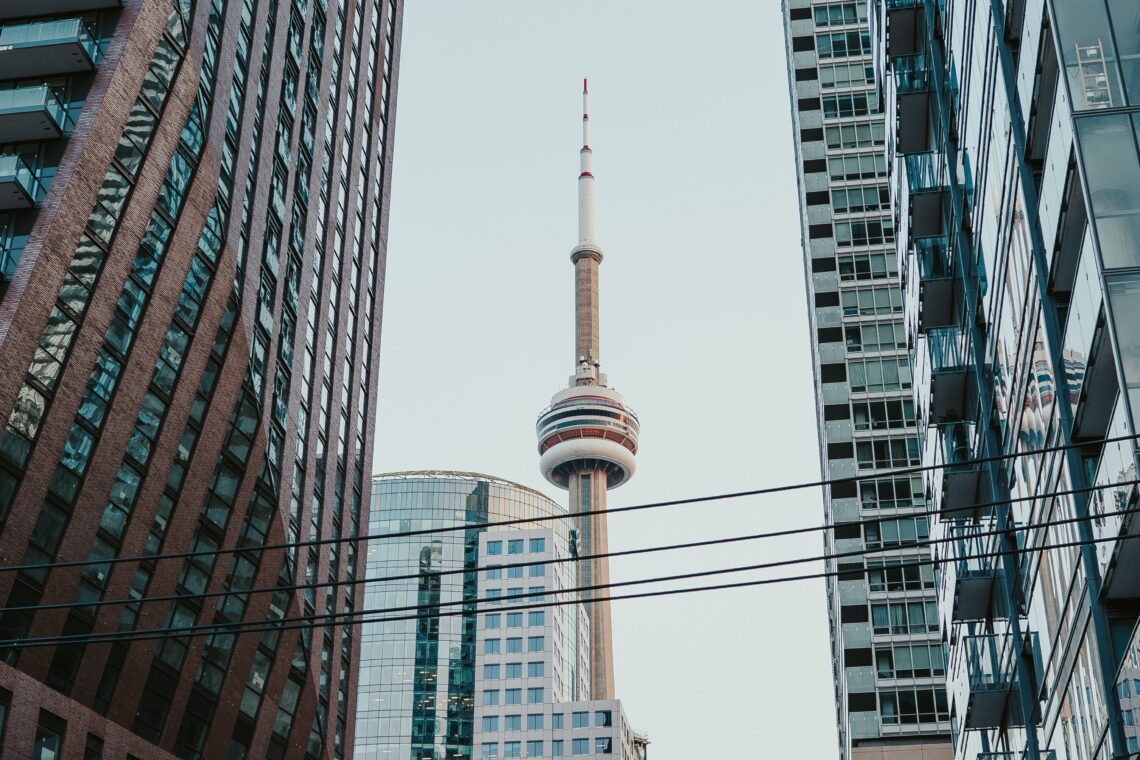
Communities versus condo land
Sun, freezies and the park.
That’s the way Toronto exists in Subeda Sheekhnur’s memories of growing up in her childhood neighbourhood in the city’s west end. A place of endless sunshine, flavourful freezies and staying out until the street lights turned on.
“I remember it to be a happier place,” she says. “I’ve latched onto this idea that it was always sunny.”
Now when Sheekhnur pictures Toronto, she sees identical glass buildings that have infiltrated pockets of the city. She envisions the Rexall that replaced the iconic Brunswick house—affectionately referred to as the “Brunny”—a pub that served generations of Torontonians for 140 years. She pictures the gaping hole that used to be Honest Ed’s, which has been left relatively untouched since they bulldozed it a few years ago as part of the Mirvish Village development.
“It’s like the city has lost its essence,” she says. “Who knows what it’s going to be like in the next couple of years.”
The COVID-19 pandemic rapidly accelerated the transformations that modern capitalism is inflicting onto the city, as many small businesses have been forced to close down. Golden Thai, the restaurant that arguably sparked Toronto’s taste for Thai food, closed its doors forever in mid-2020 after 20 years of business. Cafe Crepe faced a similar fate when they announced on July 15, 2020 that they were permanently closing the restaurant that had been an iconic fluorescent fixture on Queen Street West for 18 years.
These restaurants weren’t the only businesses forced to close. The 2020 Toronto Employment Survey revealed that Toronto had 3,480 less business establishments by the end of 2020 than it had at the beginning of the year. The report also says that small businesses, defined as those with one to four employees, were disproportionately impacted by the pandemic and suffered employment declines of 82 per cent.
For Pauline Nguyen, a communication and culture graduate student, the closures and transformations of iconic Toronto hotspots have significantly impacted their cultural memory of the city.
Nguyen defines cultural memory as being rooted within visualization and navigation of cities. When asked how they envision Toronto, they picture the Toronto Skyline being dominated by skyscrapers and biking through dangerous construction sites.
It invokes feelings of frustration for Nguyen, as they ponder what it means for cultural memory to be signified by financial towers and wealthy investors. To them, it’s a conceptualization that excludes a lot of people and impacts movement and safety within the city.
“A lot of Toronto culture has become one that is saturated with the wealthy and with gentrification,” they say. “There’s this hustle culture, that if you want to make it in Toronto you have to overwork yourself.”
One of the most significant impacts on their personal cultural memory is the redevelopment of Galleria Mall. Since fall 2019 the city has been slowly chipping away at the nearly 50-year-old mall to make room for eight new towers. Nguyen says it was a quintessential representation of west Toronto and held status as a meeting place for elders to congregate and hold discussions.
For Nguyen, it’s one example in the long list of culture casualties inflicted by redevelopment plans that have displaced communities, families and diasporic neighbourhoods.
“Part of the culture in Toronto is people coming because they might be able to find their own people,” they say.
Ashley Allen, who holds a masters degree in urban planning, remembers actively resisting living in the downtown core composed of glass buildings that she used to jokingly refer to as “condo land.”
In the last few years she’s had to reconcile that the term can no longer be applied to one particular area of Toronto, but rather encompasses all of Toronto.
Similarly to Sheekhnur and Nguyen, Allen finds herself surrounded by the bones of her favourite iconic locations that have been transformed into “mega multi-tower stains plaguing the city’s streets.”
“It’s the charming, humble and kind of cheesy Toronto that’s been replaced with soulless development that I miss,” Allen says.
While many communities have been displaced, Nguyen says they are the key to maintaining Toronto’s cultural memory. They reference Toronto as a place for people to find their communities and create kinship networks. As long as Torontonians continue to gravitate towards those pockets, Nguyen says that there is hope for a push against a Toronto that is defined by the wealthy.
Allen also believes that Toronto’s culture memory is rooted within its people and that Toronto could never become “cultureless,” even if it is riddled by skyscrapers and construction sites.
“No matter how many chain stores and tower blocks that rise, you can’t bulldoze that particular flavour of Toronto’s people,” she says. “It’s the people that will keep the culture of the city alive.”
About the author
Olivia Matheson-Mowers is a former reporter for Youth Mind. When she’s not writing, or playing with her cat, Daisy, you can find her curled up in her heated blanket watching seasons 1-6 of Dragon Ball Z and complaining about seasons 7-9.







